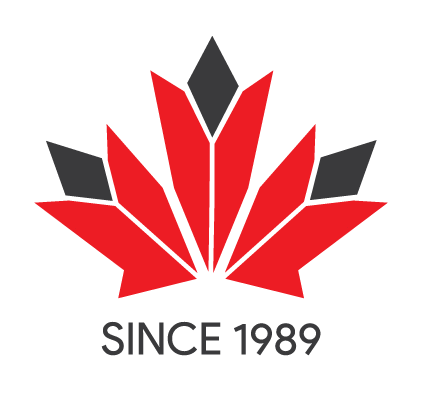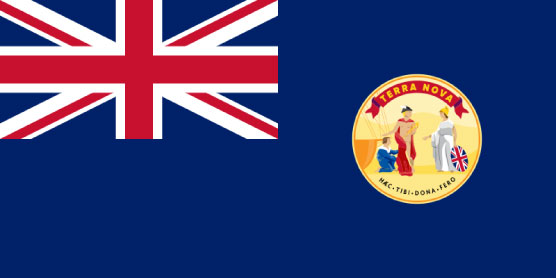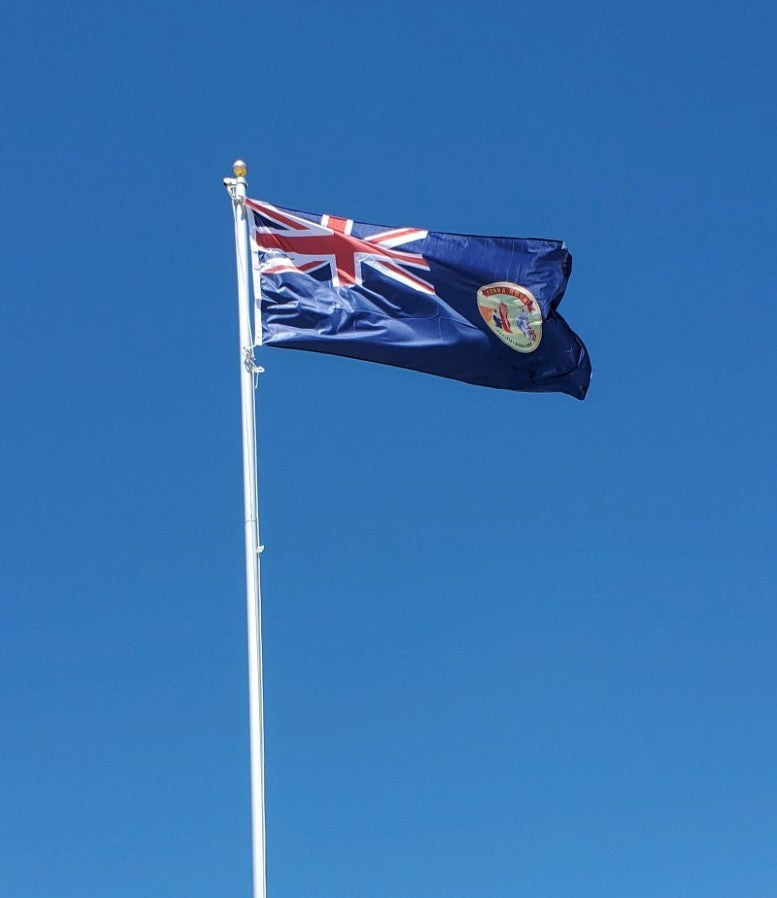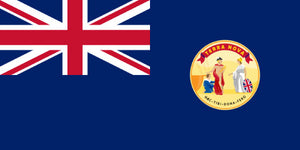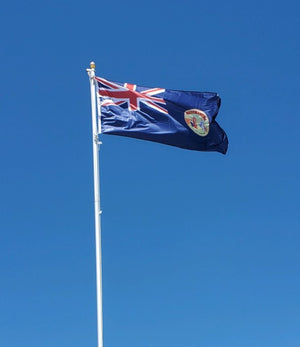Buy Online - Blue Ensign of Newfoundland Flag
Product Description
All of our flags come in 2 different fabric options: standard knitted polyester and premium nylon.
Knitted polyester is our standard fabric and is the most common material for flags worldwide. It offers a great print with approximately 70% bleed-through onto the reverse side. It is a fantastic choice for an economical flag that is both durable yet cost effective.
Nylon is our premium fabric that offers maximum durability and colour penetration of approx. 95%. For reference, nylon is the Canadian Government standard material for flags. These nylon flags can be seen flown outside most hospitals, RCMP detachments, schools, Government buildings, etc.
Sizing
See Our Sizing Chart for more info on the right size flag for your flag pole
Detailed Blue Ensigns of Newfoundland Product Description
The Red Ensign was officially endorsed by King Charles II in 1674, this recognized it as the ensign of English Merchant Shipping. Later, during the Victorian era, the flag - with the colonial badge - formed the basis as the Colony of Newfoundland's civil ensign. You can see paintings depicting the red ensigns flying from the topmasts of Grand Banks schooners and 19th century photographs showing the Ensign flying atop mission stations and HBC trading posts along the Labrador coast.
In 1904, a special civil ensign was designated for Newfoundland. the Red and Blue Ensigns with the Great Seal of Newfoundland in the fly were the Colony's official flags from 1904-1931. The Union Jack was adopted as Newfoundland's official national flag and the ensigns reserved for shipping and marine identification. The Red Ensign was flown by merchant shipping while the Blue Ensign was flown by Governmental ships. Neither was immediately formally adopted by the Newfoundland National Assembly.
The Newfoundland National Flag Act of 1931 was what allowed Newfoundland's parliament to officially adopt the Union Jack as the national flag of Newfoundland and re-affirmed the Red and Blue Ensigns as official flags for marine identification.
The Great Seal of Newfoundland Badge consists of Mercury, the god of commerce and merchandise, presenting to Britannia, a fisherman who, in kneeling attitude, lis offering the harvest of all the sea. Above the device in a scroll are the latin words "Terra Nova" and below the motto (Haec Tibi Dona Fero) or "These gifts I bring thee"
Perfect for the classroom as a teaching tool for historical reenactments. For other sizes please reach out via the contact us link.
Pictures provided by our customer James Cooper
